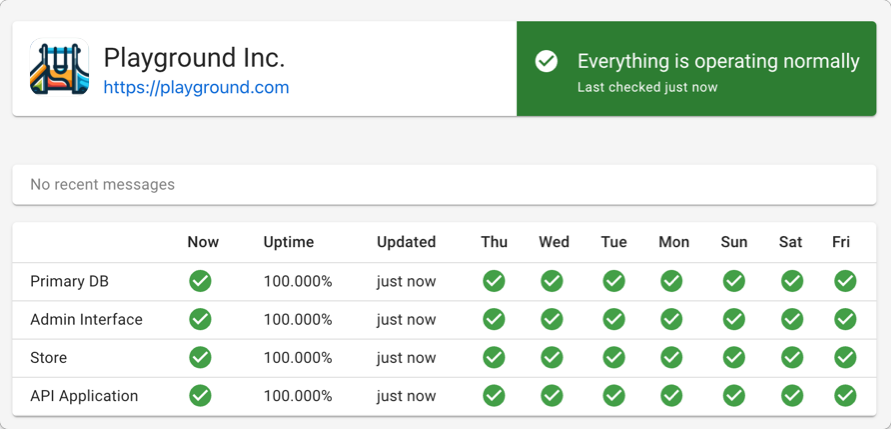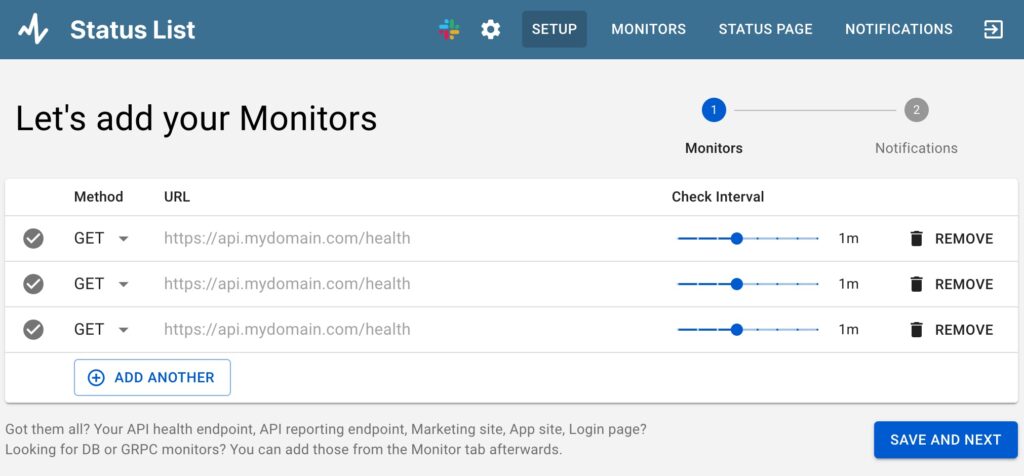
Every day, we ping thousands of servers and detect hundreds of incidents. We get it, down time sucks. We check for servers that are down or not performing well and let your team know right away!
Start with 5 monitors on our free plan or 10 monitors on our Business plan (more details, get started)
Get notifications in the context your team is used to. Push them into a Slack channel? SMS to the on-call team member? No problem.
Run checks on all the systems you’re running. Status List integrates with traditional HTTP endpoints, all the major databases and even GRPC calls.
You’re in good company 🙂
Join the 2000+ happy endpoints we monitor every minute
Our $130 lifetime plan comes with 10 monitors, standard notifications and unlimited status pages! More details on our pricing page.
Broadcast to the world and your own team in style! Use our built-in status pages to display your uptime data.
Add your logo, company name and website link to make it yours. Style to your heart’s content to be consistent with your branding.
Use your custom domain to add that extra level of professionalism for your customers. Get that status.yourdomain.com setup today!
All our status pages, even custom domains are served over HTTPS. Get that green checkmark on the URL bar with zero effort from you 🙂

Keep your private metrics, private. Create custom status pages for just your team or authenticated users to see. It’s as easy as flipping a switch.
Keep your private metrics, private. Create custom status pages for just your team or authenticated users to see.
Get your free account and start monitoring today!! You can always upgrade later.
Free Plan:
5 monitors, 2.5m frequency, one status page
Business Plan:
10 monitors, 30s frequency, unlimited status pages
Lifetime Plan:
10 monitors, 30s frequency, unlimited status pages


Use the Heroku CLI to provision the statuslist:consultancy addon or head over to the Status List Addon Page
© Status List 2024